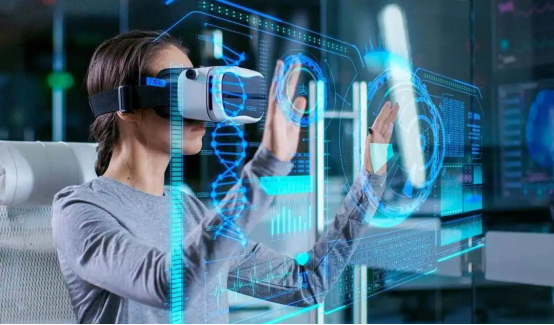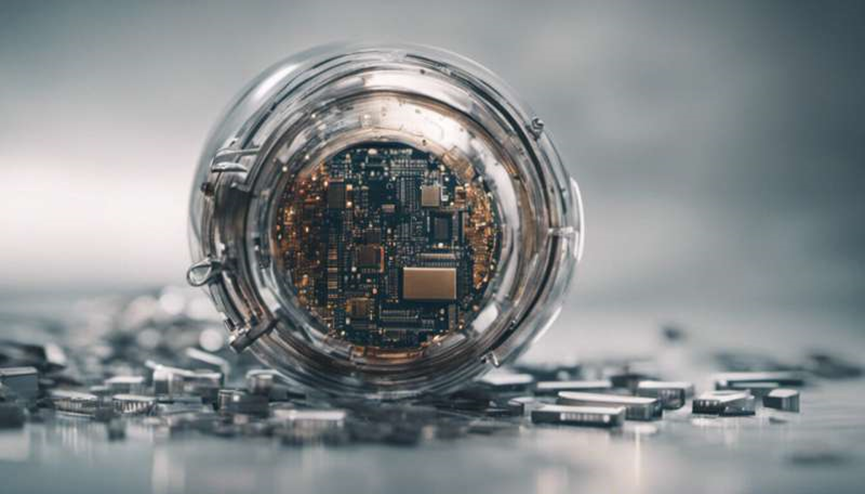VR may help with conditions ranging from pain to phobias to post-traumatic stress disorder.
Katherine Hobson reports
This article is based on reports that feature expert sources.
Virtual reality in medicine
Crohn's disease and the pain it causes put Harmon Clark back in the hospital. This time, however, his treatment came with a twist: a helicopter "flight" over a waterfall in Iceland. "I could almost feel the sun and hear the birds," he said.

A Cedars-Sinai patient recovering from gastrointestinal surgery tried virtual reality. (JENNA SCHOENEFELD for USN&WR)
When Clark first landed a seat ina virtual reality clinical trial at Cedars-Sinai Medical Center in Los Angeles, he was skeptical but thought he had nothing to lose. "They told me it might help me manage my symptoms, feel a little better and get some sleep," he said. In fact, Clark said that once he put on the VR headset, he felt euphoric, but it quickly turned to relaxation. In fact, Clark, now 35, was so engrapped in his altered reality that he missed a dose of painkillers; Usually, he's counting down. During his stay in the hospital, Clark continued to use headphones to help him sleep, during I.V., and to cope with pain after surgery. "It didn't take the pain away, but it made those moments easier to control," he said. "People think of VR as a gaming technology," said Dr. Brennan Spiegel, director of research at Cedars-Sinai Health Services, who led the trial. But computer-generated interactive immersive worlds, often accessed through headsets, can sometimes be tapped into the entire field of medicine with manual control. pain managementIn addition to , researchers and clinicians are looking at how VR can be applied to everything from treating phobic disorders to physical rehabilitation.
A review of randomized trials of inpatient VR applications published in 2017 found evidence of effectiveness, but noted the need for larger, more robust studies to determine benefits and cost-effectiveness. "It's not like VR has magical properties," warns Albert "Skip" Rizzo, professor and director of medical virtual reality research at the University of Southern California's Institute for Creative Technologies. But there is growing evidence that it can improve or augment certain treatments known to work in the real world, he said.
Relive the trauma safely. Take exposure therapy as an example. This technique can help people face situations that they fear in a therapy setting, so their anxiety and distress can be relieved over time. It's hard to fully replicate these scary situations, whether it's flying on an airplane, speaking in front of a large group of people, or revisiting the trauma that led to PTSD, says Barbara Rothbaum, a professor of psychiatry and behavioral sciences at Emory University School of Medicine in Atlanta. VR can make the experience feel realistic, but also make it controllable. For example, therapists can only add turbulence to a virtual flight if the patient is ready for heightened exposure.
Find normal. Exposure therapy augmented with VR eventually helped Chris Merkle, a Marine Corps veteran, whose multiple visits to Afghanistan and Iraq left him battling post-traumatic stress disorder. He tried traditional psychotherapy but found it difficult to be open about his experiences, which limited his progress. In a 10-week trial led by Rizzo, he found recreating the traumatic day in Iraq, when his unit came under heavy gunfire while trapped on a two-lane highway, virtual reality was so compelling that long-forgotten details burst into his mind. Reliving the day wasn't pleasant - but he survived it time and time again. "Talking about it didn't kill me. It normalizes it, "he said. Now, instead of feeling a surge of stress and anxiety, he can smell a burning tire after a traffic accident on the highway and recognize it for what it is. Merkel is now in a doctoral program in clinical psychology and works full time at a veterans center that offers readmissions counseling.
The pain may be relieved through different mechanisms - at least three, Spiegel said. There's also the distraction part: VR "overwhelms the brain with visual stimuli and presence" elsewhere, he says, which could shift the focus of attention away from the physical experience of pain. (An offline example: blowing bubbles during a child's vaccination to distract them from the camera. Engaging experiences can also make time seem to fly by, thereby reducing the perceived time spent in pain. This pleasurable immersive experience is thought to prevent "gates" in the spinal cord from receiving pain signals.
This will come in handy during childbirth. A recently published pilot study looked at pain perception in 27 women giving birth for the first time, assigning them to a period of drug-free labor followed by a period of drug-free labor plus VR, or vice versa. Women experienced a manatee scuba dive simulation, set to relaxation-induced music, with the option of taking virtual photos of the scene using a manual controller, said David Frey, an obstetric anesthesiologist now practicing in Orlando, Florida, where the study's authors conducted the study at the University of Michigan. They rated pain and anxiety lower in the VR environment, regardless of whether they entered the virtual world at the beginning or after, and 82% said they very or completely enjoyed using the technology during labor.
Anxiety amplifies pain and discomfort, so at Lucill Packard Children's Hospital at Stanford University, children use VR to calm down before surgery, during nasal endoscopy, and when a cast or suture is removed, for example, says pediatric anesthesiologist Thomas Caruso. Child life specialists meet with children beforehand to see what kind of content they are interested in - active, such as picking up pebbles, or passive, such as watching fish float by. (This choice also gives them autonomy, which is often lost in hospitals.
Side effects. Stanford kids are screened for risk factors that might make VR unsuitable, such as a history of seizures, nausea, or motion sickness. The most common side effect of VR is "motion sickness," when a disconnect between what the eye sees and what the inner ear senses can lead to dizziness, nausea and vertigo, Spiegel said, although this is less of an issue as VR technology improves. Some people may also be susceptible to the VR equivalent of bad travel, where the mind feels detached from the body, he said.
For those who can participate, VR can also be a motivator. For example, many rehabilitation patients don't always exercise at the prescribed intensity as often as they should, says Danielle Levac, assistant professor in the Department of Physical Therapy, Exercise and Rehabilitation Sciences and director of the Rehabilitation Games and Virtual Reality Lab at Northeastern University. A VR scenario that allows patients to virtually ski, say, shifting weight from foot to foot and losing points for missing a door, could make it more fun to use, with the potential to lead to better outcomes and faster recovery, she said. Rehabilitation is also about learning new skills, and VR is there to help too; The idea is that the more engaged and active people are, the more enhanced their learning will be, possibly through better memory consolidation.
VR can also be used to engage patients in other ways. At Lucile Packard, parents of children with congenital heart disease can put on a headset and explore the virtual heart from the inside out. Chronic pain patients like Clark can use VR to learn real-world coping or relaxation techniques such as yoga. That's what Clark, who is now a certified instructor, has done since leaving the hospital.









Post comments